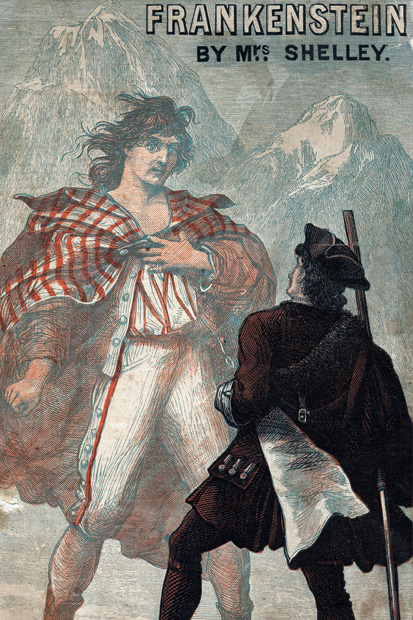It is perhaps the most celebrated house-party in the history of literary tittle-tattle: a two-house-party to be precise. Byron and his doctor/companion/whipping-boy John Polidori in the grand Villa Diodati overlooking Lake Geneva. The Shelleys (Percy and Mary) and Mary’s stepsister Claire Clairmont a short walk away in the modest Maison Chapuis. The cat’s cradle of sexual crossed lines. The dark and stormy nights. Byron’s proposal that they should each write a ghost story. The creation, by Mary Shelley, of Frankenstein. The conception of poor, short-lived Allegra, child of nonchalant Byron (‘When a girl comes prancing to you at all hours there is only one way’) and bold, silly, self-deluding Claire.
The story has been told over and over again; by the participants themselves; by each of their various biographers; by feminist scholars eager to strip Mary Shelley of her self-invented disguise as the devoted, self-abnegating helpmeet and widow to a genius and to instate her as a major Romantic author; by a legion of sufferers from Byro-mania (a mental illness first named by Byron’s wife, and still endemic both within and outside academe); and perhaps most luridly by Ken Russell in a deliciously absurd film in which Mary and Claire (both of whom, as contemporary portraits reveal, wore their hair neatly pinned and their waists corseted) run wildly around a semi-ruined mansion in wispy negligees, their tresses streaming and their lily-white necks laid bare for vampires to prey upon.
There is a reason why the story has been so often told. As Jane Austen (these wayward young people’s wiser contemporary) and every soap-opera scriptwriter knows, you have to get your characters together — in a village, an East London square, a lakeside villa — before they can kindle each other into a plotline. Once you do that, the possibilities are all but endless.
Andrew McConnell Stott has found a novel and illuminating way of treating the storylines which came together that summer of 1816.








Comments
Join the debate for just £1 a month
Be part of the conversation with other Spectator readers by getting your first three months for £3.
UNLOCK ACCESS Just £1 a monthAlready a subscriber? Log in